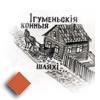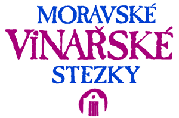Menu
Production
MORAVIA WINE TRAILS
Southern Moravia, Czech Republic
Trail presentation
Moravian Wine Trails (Czech Republic): Almost 1250 km of cycling and hiking trails through orchards, vineyards and wine cellars of South Moravia. The backbone connects Uherské Hradiště in the Eastern part of the region to Znojmo, a medieval town on the Austrian border. Ten loops featuring local wine types and wine cellar architecture provide access to unique cultural heritage and viniculture. Visitors can choose a one-day or two-week tour to explore Moravian folklore, wine and UNESCO Heritage sites. The trail system is continued in Austria with 13 trail loops extending over 1600 km consisting of signposted wine trails in Austria's Weinviertel highlighting wine types such as Tramin, Grüner Veltliner, Sauvignon, Blauburgunder and others. The South Moravian and Weinviertel regions together create a unique wine growing area, which caters to the needs of cyclists, as well as wine and cultural enthusiasts. The Trail program is being developed by Nadace Partnerstvi (Czech Environmental Partnership Foundation) with the aim of making South Moravia prosperous as a "Region of Monuments and Wine".
The program has 5 main goals:
- landscape protection and improvement;
- cultural heritage protection;
- tourist product development;
- motivating local people and improving their qualifications;
- support for small vintners and viniculture.
Main tourist attractions and towns along this trail (nature and cultural heritage etc.)
The South Moravian region is Europe's crossroads, where trade routes leading from East to West and from North to South have intersected from prehistoric times. The Dyje-Svratka basin and Moravian Karst (Moravský kras) caves have been settled since the Stone Age. But both South Moravia (CZ) and Lower Austria are best known for their wines and for their unique wine cellar architecture. UNESCO has included three areas in Southern Moravia on the World Heritage List -- the highest number in the Czech Republic. They are the Lednice-Valtice area (Lednicko-valtický areál) and the biosphere reserves of Pálava and the White Carpathians (Bílé Karpaty). Cross-border National Park Podyjí/Thayatal is the Czech Republic's newest national park. The region is also very rich in living folklore traditions. Folk art artifacts and handicrafts from across the world are collected in the Institute of Folk Culture and in the open-air Museum of a Southern Moravian Village in Strážnice.
Main tourist attractions:
- The UNESCO World Heritage Lednice-Valtice area;
- Austerlitz Castle (Slavkov u Brna) with displays of the internationally-famous Battle of the Three Emperors;
- The castle in Moravský Krumlov housing the Slavic Epic (Slovanská epopej), a monumental art work by Alfons Mucha;
- Protected system of wine cellars in Plže near Strážnice;·
- Medieval towns of Znojmo and Mikulov and historic center of Brno;
- Jewish cemetery and synagogue in Mikulov.
Main villages/towns:
The Greenway runs through nearly 300 wine growing villages and towns. The largest are: Brno, Znojmo, Uherské Hradiště, Mikulov and Břeclav.
General characteristic of the Greenway
Complete list of Moravian Wine trails:
- Moravian Wine Route - 290 km (Uherské Hradiště - Znojmo, red marking).
- Brno Wine Route - 130 km (blue).
- Znojmo Wine Route - 165 km (dark green).
- Mikulov Wine Route - 82 km (yellow-green).
- Velké Pavlovice Wine Route- 110 km (light blue).Wine Route Podluží - 115 km (orange).
- Mutěnice Wine Route - 65 km (pink).
- Kyjov Wine Route - 85 km (light green).
- Bzenec Wine Route - 26 km (silver)
- Strážnice Wine Route - 101 km (dark blue).
- Uherské HradištěWine Route - 75 km (violet).
Podluží Wine Route - 115 km
The southern part of the route starts in Břeclav, lying on the Austrian-Czech border. Hospitable vintners and great wines can be found on every step. Two important archeological Slavonic sites, located in Pohansko and Valy near Mikulčice are also worth a visit in the southern part of Podluzi.
Mutěnice Wine Route - 65 km
This easy route will take you through fields, cultivated landscapes and strikingly green orchards and vineyards. Historic wine cellars featuring excellent wines can be found in Mutěnice in Pod Búdama and in Milovice in Šidleny. These unique concentrations of wine cellars offer outstanding examples of wine cellar architecture of Slovak Moravia. The Mutěnice Wine Route is especially beautiful in the autumn, when the landscape is most colourful, traditional folk costumes are on display, folklore events and lively celebrations are under way in wine cellar lanes and the smell of young wine - burčák - abounds.
Bzenec Wine Route - 26 km
This is the shortest wine route and gives visitors the opportunity to delight in the countryside from hill-top viewpoints. Numerous examples of traditional rural architecture and wine centers can be found among the many wine cellar lanes in the region. The town of Bzenec, which will soon celebrate its 1000th anniversary, is dominated by a Jewish cemetery dating back to medieval times, but with grave stones from the end of 17th century. Visitors can taste typical wine called "Bzenecká lipka" /Bzenec Lime wine, which is famous for its aroma of the traditional lime tree found in the chateau park.
Strážnice Wine Route - 101 km
Zig-zaging more than a 100 km, the wine route covers a large territory, leading into the eastern part of the White Carpathians. Two days are needed to take full advantage of the area's cultural events.. The historic town of Strážnice offers unique open air museum with traditional architecture and baroque wine cellars from 16th century in Petrov-Plže.
Kyjov Wine Route - 85 km
This wine route represents a challenge for experienced cyclists, whose efforts will be rewarded by spectacular landscapes. Rolling hills near Kyjov are followed by steep climbs and long downhills in the Chřiby mountains and then by the varied terrain in Ždánický. The characteristic color of this trail is green, which will accompany you throughout your journey.
Uherské Hradiště - 75 km
Rolling hills, important folk architecture and picturesque landscapes combine to make this route suitable for family day trips. Uherské Hradiště is the center of Slovak Moravia and provides the starting point for this route, which leads along the Morava river. At a crossing near Kostelany, the trail follows the river through vineyards all the way to Polešovice, with a branch leading south towards Ostrožská Nová Ves, a village known for its spa, natural swimming pool and boat rental.
Velké Pavlovice Wine Route - 110 km
The wine region is dense with signposted bicycle routes. You can divide your travel into sections and smaller loops, each offering spectacular sightseeing opportunities. Traveling to the south of Brno, you can visit wine shops and exhibitions in Židlochovice and Hustopeče, which offer the best wines from the region.
Brno Wine Route - 130 km
The route is lined up with little roadside shrines and crosses, which pay testimony to the pious character of the area lying between Moravany and Slavkov (Austerlitz), site of the famous Battle of the Three Emperors. Excellent red wines comparable to wines in Velké Pavlovice are characteristic of the area.
Znojmo Wine Route - 165 km
This is the longest wine route connecting 55 wine-growing villages. The wine region is dominated by fruity white wines and a flat countryside. The trail leads through vineyards and fields suitable for all cyclists. Enthusiasts of more challenging terrain will enjoy the northern part of the route leading along the Dyje river and into the Podyji/Thayatal National Park. For wine connoisseurs, lovers of wine cellar labyrinths and folk architecture, we recommend a visit to the villages of Šaldorf-Sedlešovice, Hnanice, Šatov, Chvalovice, Vrbovec and Jaroslavice located along the southern part of this route and taste the best wines of the region.
Mikulov Wine Route - 82 km
The route will take you through a countryside cultivated by generations of Moravians, Germans, Jews and even Dutch Anabaptists. Your journey starts in Lednice-Valtice, a UNESCO Heritage Site and runs along the former Iron Curtain all the way to Mikulov, the cultural, historical and wine center for the entire region. To learn more about viniculture, a visit to the educational trail in Novosedly is essential, which introduces outstanding wine cellars and a young generation of Moravian vintners.
Moravian Wine Route - 290 km
This is the backbone trail connecting all wine routes of South Moravia and the wine center of Znojmo in the West and Uherské Hradiště in the East. Traveling along this route, the visitor has an unusual chance to visit 70 wine villages, dozens of protected landscape areas, as well as historic monuments in this region.
Geographical reference mark (major access points/start/end of a greenway) - towns and areas crossed:
Main backbone: Znojmo to Uherské hradiště - 290km: Znojmo-Jaroslavice-Drnholec-Mikulov-Hustopeče-Velké Pavlovice-Mutěnice-Kyjov-Bzenec-Uherské hradiště.
The main access and starting points are two towns - Znojmo and Uherské Hradiště (both accessible by train).
Length - 1250km + local loops.
Surface - hard paved surface, gravel, field roads with light/hard surface
Percentage of trail/forestry roads/service roads/quiet roads main trail or theme loop percentage of trail - main backbone: forestry roads/service roads/quiet roads:
200 km - field roads with light surface.
100 km - field roads with hard surface.
200 km - paved field roads.
100 km - built bicycle trails.
50 km - unpaved forestry roads.
400 km - quiet roads.
200 km - roads with medium motor traffic.
Main users main backbone: cyclists local loops: mountain bicycles, hikers, cross-country skiers, kayaks
additional attractions: railbike system, Bata canal, municipal wine centers, resting points.
Inter-modality possibilities (connections to closest cities/towns and options for using public transport train/bus with relevant web sites or links)
The best starting point is the town of Znojmo or Uherské Hradiště. Both are accessible by train. The main train line Brno-Vienna connects the trail system with main access point in Břeclav /Brno 1hr, Vienna 1.5hrs. Information about timetables: train (www.czrail.cz, www.oebb.atl).
The Moravian Wine trails intersect also with the Prague-Vienna Greenways and the Krakow-Moravia-Vienna Greenway and are well connected to the Austrian Wine trails at Mikulov, Hevlin, Valtice and Breclav.
Available maps and guidebooks
- Set of 10 maps of the Moravian Wine trails 1:50.000, 1:65.000 in English, Czech and German with route descriptions, profiles.
- Moravian Wine Trails guide - book in English, Czech and German with an excellent introduction to the wines in South Moravia.
- Greenways Moravian Wine trails, 1:100.000 cycling guide with detailed maps and profiles, route descriptions of Moravian Wine Route in English, Czech and German.
Contact to Trail Organization
Juraj Flamik, Greenway program coordinator
Nadace Partnerství, Údolní 33, 602 00 Brno, Czech Republic
Mobil: +420-606763117, e-mail: greenways@ecn.cz, www.nadacepartnerstvi.cz
Jan Grombíř, Manager of Moravian Wine Trails
Mobil: +420-606162167, e-mail: gromba@tiscali.cz
www.vinarske.stezky.cz
Network of GWs in Belarus








